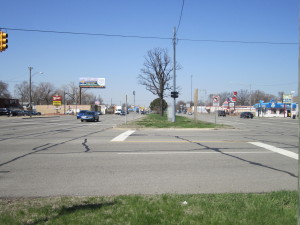Growing up, my grandpa said lots of things that made family members cringe. Like the bad uncle or crazy talking grandpa at a holiday dinner, you tolerate the conversation for a little bit, but then you quietly find your exit. You know grandpa won’t change his ways at this point in his life. His beliefs are stuck no matter how hard you try to convince him otherwise. In these situations, you can only focus on what you can control.
Lots of ink spilled last week because of acrimonious comments made about Detroit.
What our Oakland County Executive says about Detroit, transit or the region is beyond my control—anyone’s control. However, his aggressive stance might give the impression that all Oakland County or suburban Detroit communities feel the same way, and local and regional leaders should do our part to refute that assumption.
For example, recent commentary ranges from “Detroit must not survive in order for the county to prosper” or “He represents his constituents”.
As a city councilwoman representing Ferndale, I can definitively say that our leaders know that Detroit’s success is our own–we stand with Detroit. In my day job, I work diligently to revitalize downtown Detroit. As a local and regional voice representing urban areas, I see myself as a new cadre of leaders who can bridge what has divided us.
Detroit needs to thrive so Ferndale prospers, along with Hazel Park, Oak Park, Royal Oak Township, Southfield and Farmington, communities that share a southern oakland county border with Detroit.

In fact, most south Oakland County communities are suffering the same fate as Detroit, albeit on a smaller scale. While Oakland County has a stellar bond rating, a result of financial prowess and managerial foresight, that story has a flip side, which seems to be the elephant in the room when it comes to the relationships between Detroit and Oakland County: the county’s older, southern communities share many of the core city’s challenges.
Yes, development everywhere at any cost—what we call sprawl—helped all the counties grow, to the detriment of Detroit. These same policies have also been hurting inner-ring communities.
Job and population loss do not do not magically end at the 8 Mile border. Oakland County has a great bond rating, but Royal Oak Township now enters emergency management. Hazel Park teeters on the fiscal edge. Ferndale city council tries to keep four firefighters so we don’t fall to lowest manpower. Pleasant Ridge is going through the hard conversations with their citizens to raise their millage rate. All these communities continue to lose population.
Conversely, communities that share Detroit’s borders reap the benefits of strong neighborhoods, revitalized corridors, new economic development and new businesses, regardless on which side of the border they exist. Ferndale benefits from a strong Detroit Green Acres and Palmer Woods neighborhoods, along with growing retail efforts at Livernois “Avenue of Fashion”. For me, I only see opportunity for Detroit to build on its successes with its neighbors—that go beyond the border.
If you think Oakland County’s progress with mass transit had something to do with county leadership, then you are mistaken. Many community leaders have ignored the county executive’s weak support for transit investment, by taking action on what they can control.
In 2010, elected officials from Ferndale to Birmingham, with support from nonprofits, formed a task force to create a stronger voice for economic development, coordinated land use and transportation improvements along the Woodward Corridor. We knew the communities had to step up to vocally demonstrate their support for M1 Rail and developing transit projects in downtown Detroit. That initiative is now called “Transform Woodward”, created by the cities.
A small handful of community representatives wrote the 2011 grant application that resulted in a $2.5 million federal grant for the Woodward Alternative Analysis for the corridor. Without any county involvement.
Imagine the additional progress we could make if our county executive was a Detroit champion instead of a protagonist cloaked in regional collaboration rhetoric. While the Detroit Zoo, DIA regional millage and Cobo Authority are shiny examples where counties came together to save assets we all care about, we have not come together to save or build on the assets that make our urban cities strong, including Detroit—as well as many cities in Oakland County.

Leave a Reply